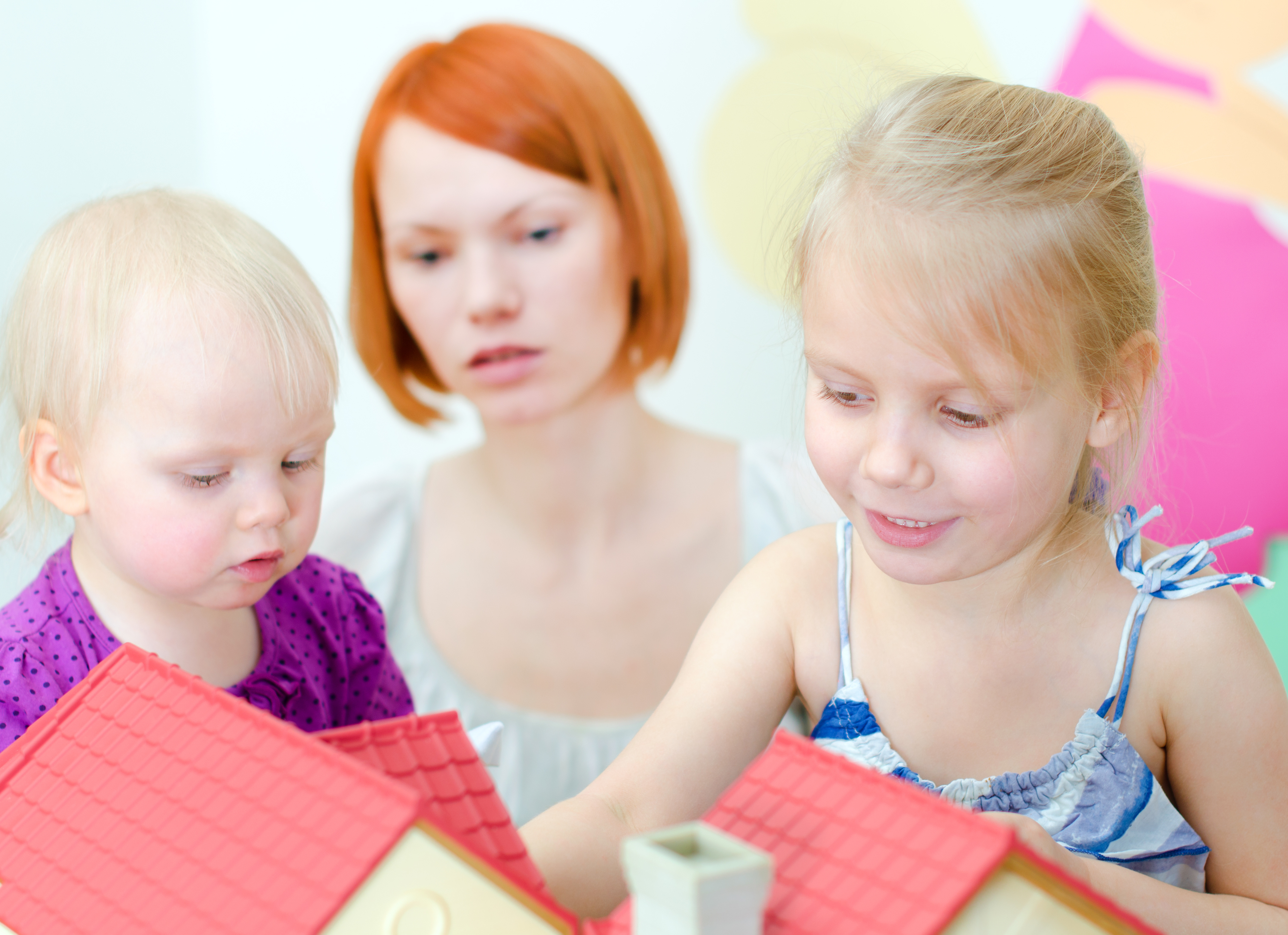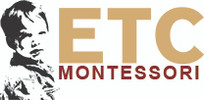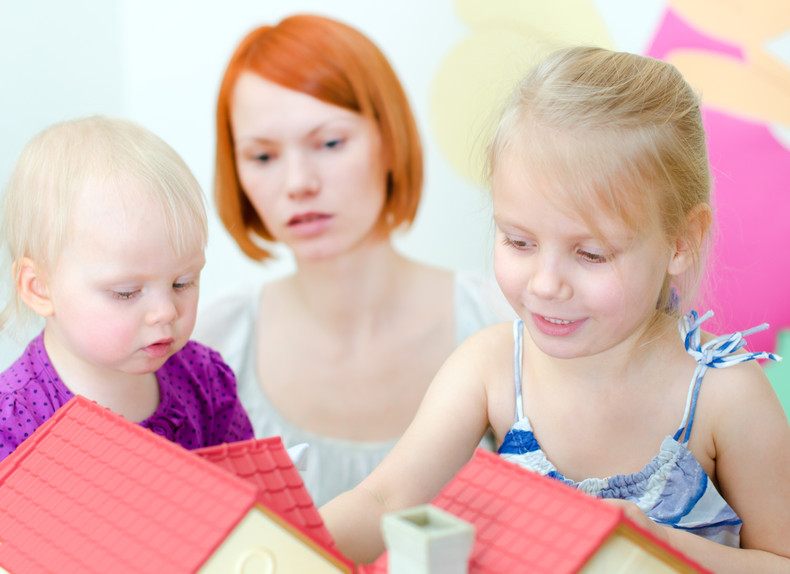
Clarification: Before I begin, I just wanted to clarify the word “primary.” There are different terms for this age group, but for the sake of this article, primary refers to a classroom consisting of 3 to 6 year olds.
Last year, I had a unique opportunity to help start a Montessori program. The program was going to start by offering one primary classroom and then expand as the community grew. Since I had been trained as an elementary teacher, I hadn’t been in the primary environment for a few years. Because of that, I viewed this as an exciting new experience and I was eager to be a part of it. I know there is so much I could learn from it as a teacher and, hopefully, a future administrator. I looked at it as a challenge that would strengthen my teaching skills, a chance to improve myself. I know the work and lessons that should be in a primary classroom, but to experience it firsthand is different. I wanted to see all of the transformations that happened before the child reached my classroom in first grade.
In September, I found it challenging to find a rhythm and to truly understand and meet the students’ needs. These three year olds were much more demanding than I remembered. And I used to complain about first graders not being able to tie their shoes! I realized a few weeks later that I wasn’t truly seeing the child. I was seeing what I wanted to see; I was looking at them in an incomplete form. Once I began to see the whole child and adjust my expectations accordingly, I found that each child was their own light trying to find a way to burn brightest. They were interested, hard workers that wanted to explore and be a part of their world. They learned so much and welcomed new lessons and knowledge, but I believe they taught me more than I taught them. Over the course of the year, I was reminded of all the things that truly matter as a teacher.
Enjoy the little victories!
September was a month of transition; not just for the children, but for me as well. I had to get into a three-year-old’s shoes and remember that pulling up pants and washing hands was an accomplishment. Within the first few weeks, I taught the children how to use a placemat and eat their snack and lunch independently. I didn’t think it was a big deal. I actually thought that it wasn’t enough. Then, a parent came up to me at the end of September. She told me that she was so impressed that her child could feed herself. She smiled widely and talked about how her child wants to do things on her own. That moment, right there, meant everything to the mother and her child. These are the kind of moments that we are looking for and want to celebrate, even honor, in our classrooms. Sometimes we forget that the small victories are just as important as the big ones. Every accomplishment is worth celebrating and it helps each child become a little brighter.
Particularly, in an elementary classroom, and more so now then ten or fifteen years ago, there are a lot of academic demands on the children, teacher, and program. Sometimes, parents and other sources demand that the child be better, faster, and stronger than everyone else. We might forget that the elementary program was created for children to get to know themselves and find their strengths and weaknesses. This time is for them to decide who they will be and how they will contribute to their community. It’s easy to forget this because the work, lessons, and curriculum of the elementary program lends itself to advanced concerns and deeper understanding of material.
This was the first reminder I received during my time in primary. Currently, I am back with first to sixth graders. The other day a child, who is normally clumsy, was able to hold tree pose for thirty seconds. She beamed and excitedly told me about it. Before, I might have just smiled or maybe not acknowledged it at all, instead, I held my hand up and offered her a high five. I told her to be proud of herself for working so hard. If she kept practicing, her balance and focus would continue to improve. I now call these moments “minibrations.” The word may be silly, but it helps me remember to celebrate the small victories. Minibrations are not only a way to acknowledge a child’s accomplishments, but also to build trust and bond with each child.
Practical life is still important
In the primary classroom, practical life dominates the focus and curriculum. It is where the child learns to be independent, take care of himself, others, and the environment. When the child transitions into the elementary classroom, the practical life area is usually small or non-existent. I believe that practical life is still important in an elementary classroom. I usually put out letter writing work with cards and envelopes so the child may write a card or letter to someone. I also have a phone number work. I put out various old phones and the children have to find their number card and practice typing their number. Some lessons will build off their skills from primary lessons and others will be totally unique to elementary that will expand a child’s knowledge and prepare her for the world.
No matter what classroom a child is in, caring for the environment is critical to the whole child approach of Montessori. Even when a child no longer requires the physical skill acquired through practical life lessons, those lessons remind us to consider our interactions with the world around us. Keep dust pans brooms, mops, dusters, table sprayers, and towels available for the children to use to clean. Show them how to use a washboard to clean the towels. I like to take into account that it’s 2017 and show the children how to use a vacuum, and a washer and dryer. One of the classroom jobs is supplies manager. That person is responsible for checking on classroom supplies and replacing them when needed. Elementary children can play a big role in the prepared environment. There are many opportunities, through practical life, to teach science. When giving a lesson about the washer and dryer also teach the children about different types of fabrics. Have them research which ones are natural or manmade, what plants and animals they are made from, and how to care for each type.
Another practical life experience sometimes ignored in the elementary classroom is food preparation and cooking. I incorporate cooking into my lessons whenever I can. For example, we made love cake for International Day of Peace and handed it out to our community. I sometimes give the students independent cooking cards where they can make special snacks. The elementary food preparation and cooking lessons should be taken to the next level and the children should be given ample opportunity to cook, use knives, and be shown how to use a microwave, toaster, stove and oven with teacher assistance. Cooking really brings botany lessons into real life because the child begins to understand how we need and use our resources. In our classroom, one of the jobs is “chef.” Those people have to decide what snack will be for the day, get it prepared and make sure everything is ready for snack to begin. At the end of the day, they must clean the snack table and dishes.
There are many other activities that can be included in an elementary practical life area. When thinking of elementary practical life work, think about what real life skills the students will need to be successful in life to build your curriculum. Map reading, test taking, how to read a train/bus schedule, how to determine tax or a tip, and balancing a checkbook are all useful skills that should be introduced at the elementary level. Children also learn independence, responsibility, and self-reliance from the practical life area. It is definitely needed in elementary every bit as much as it is in primary.
The Importance of the Prepared Environment
The prepared environment was a major focus of discussion during the primary pre-requisite class. Working in the primary classroom, I noticed that when the classroom was properly prepared, our days were calmer and smoother. I didn’t realize what a difference it can really make. Now when I look at my classroom and school space I think about things the children will need to do and how best to accommodate those needs so they can do things independently.
I label all drawers and cabinets so they may navigate and locate tools independently. Snack is put in the lower cabinets so the children can access it. I left out all sorts of paper and binder items they might need after their lessons. I make sure that the classroom tools and items can be used by the children without a teacher’s help. I believe that Montessori was meant to teach a child to live in the world around her. For that reason, I believe it’s our duty to make sure a child is fully prepared for this world, which means that computers and iPad be used in the classroom in responsible and age appropriate ways. My current school has passwords on the computers in my classroom, which is for protection, but it hinders the child and their task. They cannot access it without teacher assistance. This is something that you should think about when reflecting on your classroom setup. In the morning, I unlock the computers and open the iPad drawer so the students may access it when needed.
Creating a prepared environment can be challenging especially if you don’t have someone to help you or there is before-care in your classroom. One way I have solved this problem is by having the children help me prepare their environment, which crosses into practical life. The children are responsible for sharpening pencils, fixing or replacing broken materials, replenishing materials, reporting shortages to me, and inventorying our supplies every Monday and Friday. In an elementary classroom, the children can be responsible for their own environment. The children will have more appreciation and care for the classroom materials.
Movement
Watching my primary students bound around the room between works made me think that they needed more movement. I adjusted my schedule a lot over the first few months of school to increase the amount of movement in the schedule. Sometimes we did an activity or they would just dance; I noticed that the children worked longer and harder during the next work period. I opened up a movement space in my classroom for the children to visit during the work cycle. These young friends were seeking a lot of movement during the day.
For elementary, I don’t have them play freeze dance, but yoga breaks are a great way to incorporate movement during the day. My class and I begin our day with yoga, a mindfulness, or a mediation activity. I find when we begin the day like this everyone is more focused. For children who need more movement, I find the Go Noodle website especially helpful. It has many different movement activities that target different skills or areas. They are short clips that you watch and follow. It is a great way to give a brain break that incorporates movement. Sometimes I take the children on a mindfulness walk to observe nature, get them moving, and out of the classroom. If your school has a garden, let your children weed it or aerate the soil. This is a meaningful task that allows for a lot of movement.
I know there is a lot to teach and we are so busy doing a thousand other things, but remember that movement is important for mental and physical health. Movement is just as important for elementary students because their bodies are beginning to develop. We have to give them ample opportunity to practice motor and self-control.
Taking a Step Back
This is one of the most difficult things about primary. I wanted to help a child put on his hat. He kept putting it on backwards. It took all of my self-control to sit back and watch. It would have been quicker if I did it, but the child would have lost a chance to practice. He might not want to try again, thinking he is not capable. If we want children to be self-sufficient we must have the patience and give them time to do things on their own. I believe this is the hardest, and most rewarding, part of the job.
In elementary, the children are older and can do more tasks on their own. There are things that they might struggle with or need assistance. My policy is first try it on your own and then ask a peer or two for help. If you cannot do it yet, then you may come to a teacher. I usually will let them try again in front of me and I observe and give tips before doing it myself. I try hard to help children without doing it for them. I really encourage my students to keep trying until all options fail. I try to instill bravery, perseverance, and confidence while encouraging them to try as many times as possible. I also remind them with each failure they get a wrinkle in their brain!
Teacher focus
No matter how demanding things become remember to honor the whole child. Nothing is more important than that. In today’s world, with everything that’s going on, we need children who are smart, but also kind, self-aware, and confident. I know that in an elementary program, academic goals are stressed and sometimes other lessons and goals are forgotten. It gets hard to balance everything and not buckle under the pressure surrounding you. Remember, it is better to have a child who understands the consequences of her actions than a child who can count. All children learn to count, but not all children learn to care!

